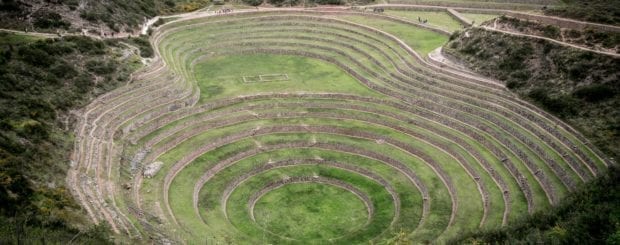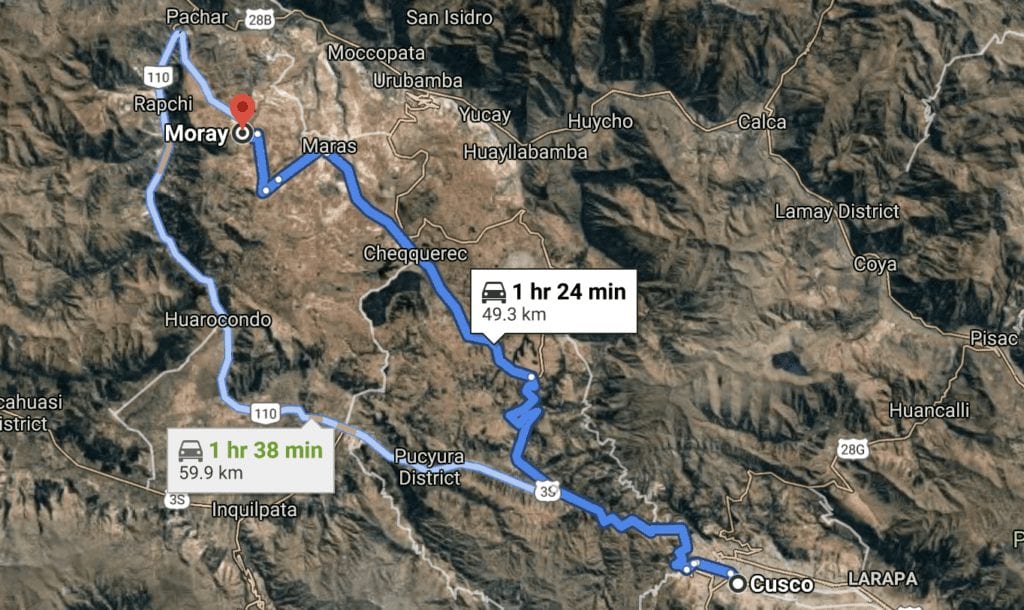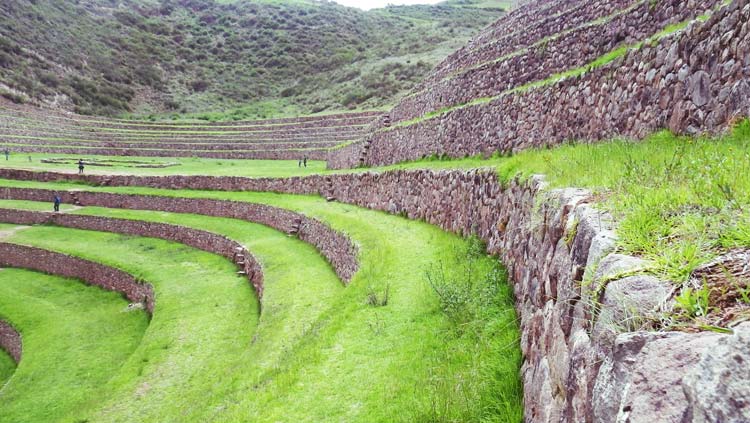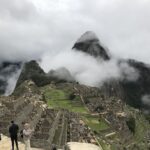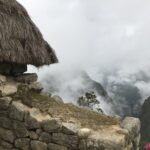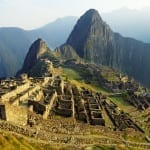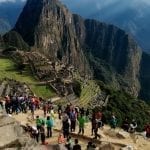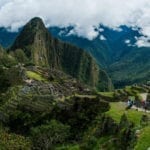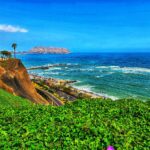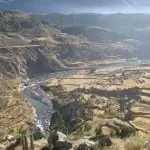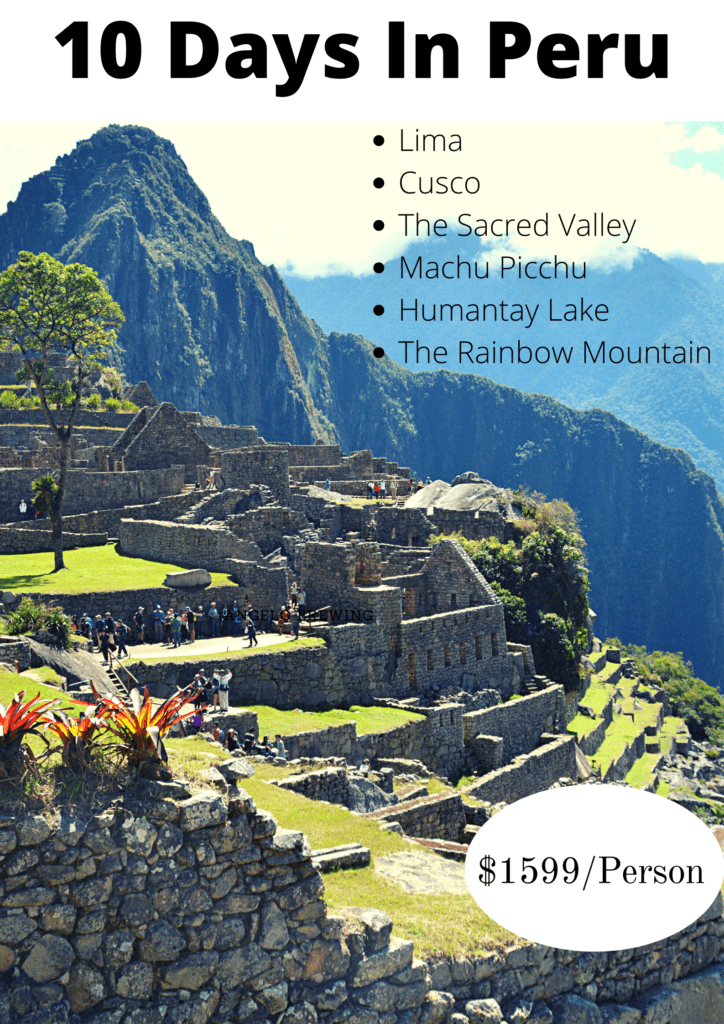The Moray Ruins in Peru
James Bustamante is Native to New York but born to Peruvian parents. He has been traveling throughout Latin America since early 2003 and finally made his home in Peru. James has made his way by eating and traveling through almost every country in Central and South America.
Last Updated on March 1, 2021 by James Bustamante
There is a set of Inca structures near the town of Maras called the Moray ruins in Peru. This Inca site is usually one of the more unknown locations to tourists however it is one of the most interesting places to visit.
The Moray ruins were used by the Inca to cultivate particular types of crops to be resistant to the elements. This day trip along with several other ruins can be a great way to spend your first days in Cusco or the Sacred Valley before heading of to your Machu Picchu hike.
What are the Moray Ruins?
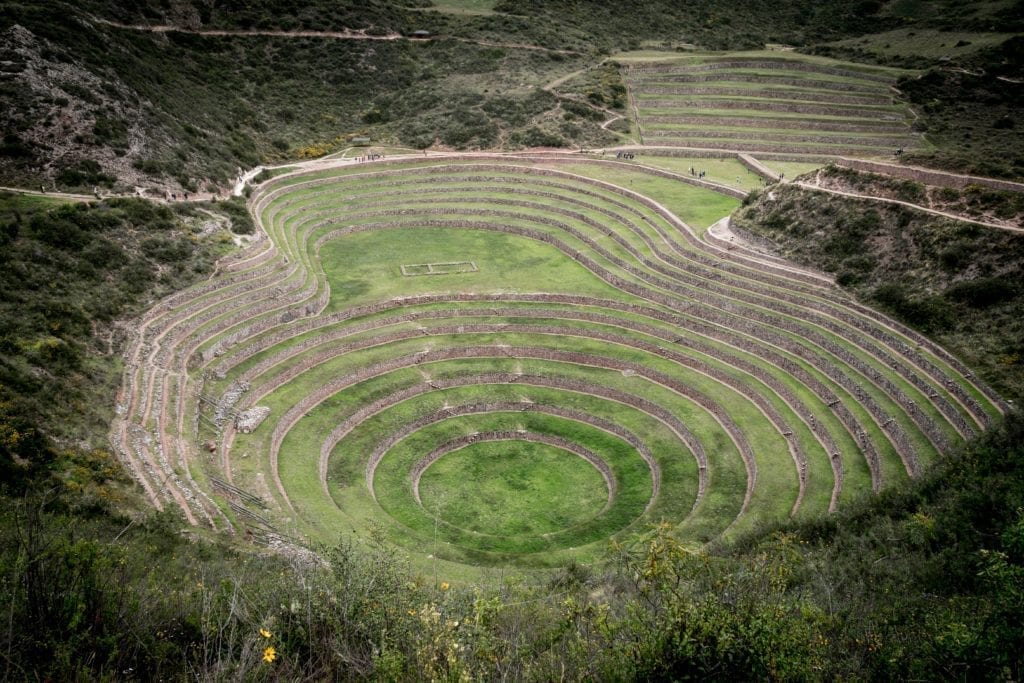
The Moray ruins were a type of agricultural laboratory for the Inca. This rounded area was dedicated to the cultivation of plants in order to make them more resistant by having them grow in higher elevations.
This rounded area is made up of three circles, each at a lower level than the previous one. The objective was to grow plants at Moray in order to improve their yield.
Think of the Moray ruins as a type of Incan Agricultural laboratory dedicated to crop yield improvements. The conditions in the Andes can be harsh so having access to more resistant strains of high yield crops was a big deal. The Incan empire was continuously growing and the larger communities needed to be fed.
The Moray ruins are located between 3,200 – 3,500 meters (10,500 – 11,500 feet) above sea level high in the Urubamba Valley of the Incas, so it was a perfect place for the Inca to carry out their agricultural experiments.
The terrain and the semi-tropical environments in the Sacred Valley was also a key factor in using this particular place for the purpose of crop testing.
Upon closer inspection of the Moray ruins, researchers were able to determine that much of the soils using in the circular Moray basin were imported from other parts of the valley by the Incas.
Just this small piece of information suggests Moray was of particular importance to the empire. There are also water channels that can be seen all the way down to the bottom section of Moray, at around 150 meters (500 feet) into the depression.
It was also confirmed that each section of the Moray ruins has a different temperature. The lowest point is a difference of 15 degrees Celsius (27 Fahrenheit) compared to the highest point in the ruins.
Travelers Notes: Crops around the world today owe the Inca and Moray in some way or another. There is over 60 percent of the world’s crops today that originated in the Andes and many of them were part of this Inca laboratory.
How to Get To Moray
There are several ways to get to the Moray ruins near the town of Maras. Below we outline a few in case you wanted to take this trip on your own instead of with a tour group and guide.
Cusco to The Moray Ruins: Route #1
The first to take the bus that goes from the city of Cusco to the center of Urubamba. Once you get off at the center o town you can go ahead and head to where there is an obvious “Y” in the road, you will also see a couple of rock statues nearby, once you see them you arrived at the bus stop.
There is a bus that goes to Moray, the price is one Peruvian sol or around 33 cents the US. One the bus stops, Moray will just be a few kilometers away. There are taxis who will take you the rest of the way, the average cost is 10 Peruvian soles or around $3 US.
Cusco to The Moray Ruins: Route #2
In this case, we take a taxi from Cusco to Moray and arrive directly into the Ruins. There are taxi drivers at the Moray ruins so when you are ready to return just ask one of them how much the ride will cost.
If there are 4-5 people in your group the total will come to 50-60 Peruvian soles, which comes to around $20 US.
You can always reach the Moray ruins via an organized tour that also includes the town of Maras as well as the rest of the Sacred Valley. Tours include transportation, permits, guided tour, and even lunch.
Alternatively, if you are looking for more of a challenge, there are bike tours that leave Cusco and head to Maras and Moray for guided tours as well.
The Town of Maras
There is a small town called Maras near the Moray Ruins. It is usually included in day hikes along with Moray as the “Maras y Moray tour”.
Once we arrive in the small Andean town of Maras you will see a few grocery stores. You really would not think much of this town originally.
It does have some interesting aspects to it though, but by far the most important is the fact that this is where Andean Peruvian pink salt comes from, the Sal de Maras.
Conclusion
The Moray ruins are another set of Incan ruins scattered near the Cusco and Sacred Valley area that deserve much more attention. Moray along with Sacsayhuaman, Tambomachay, and several other ruins are a great addition to the Machu Picchu travel package that already includes a visit to the citadel.
Frequently Asked Questions About the Moray Ruins In Peru
Where are the Moray Ruins?
The Moray ruins are located in the Urubamba Valley and form part of the Peruvian highlands.
What were the Moray Ruins?
The Incan empire used the ruins as a sort of plant laboratory in order to improve on the strains of high-yielding crops.
How can I go to the Moray Ruins in Peru?
There are many options to get to the Moray ruins such as taking a taxi from Cusco or the bus that drops you off by the Moray archaeological park.
Can I go to Moray on my own?
Yes, you can go ahead and visit the Moray ruins in Peru on your own or with a guide as part of an organized tour.
